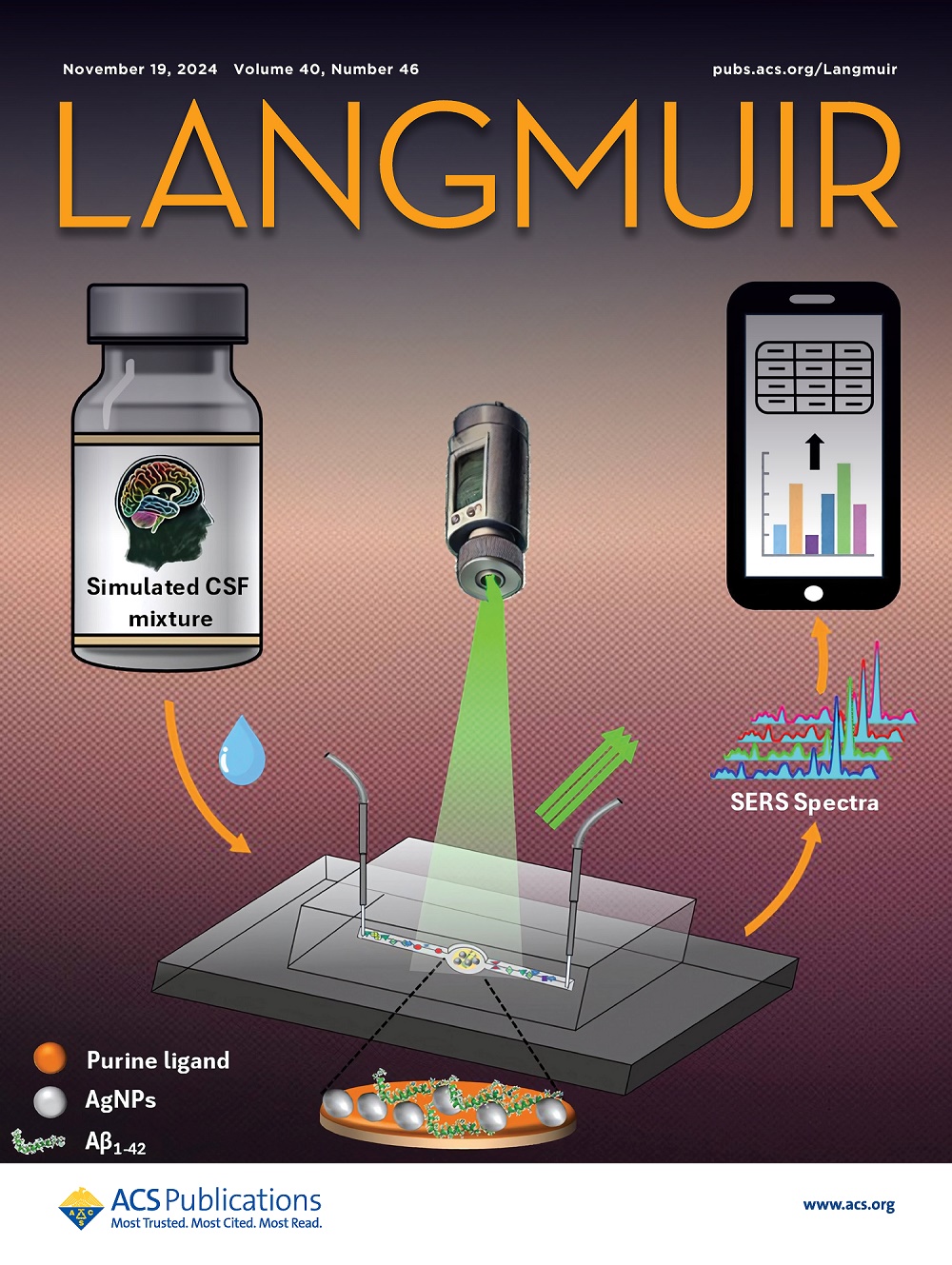Spontaneous Formation of Core–Shell Microdroplets during Conventional Coacervate Phase Separation
IF 3.7
2区 化学
Q2 CHEMISTRY, MULTIDISCIPLINARY
引用次数: 0
Abstract
We report the single-step formation and stability of protocell-like, core-shell coacervate droplets comprising a polyelectrolyte-rich shell and a solvent-rich vacuole core from the poly(allylamine hydrochloride) (PAH) and poly(acrylic acid) (PAA) system. These double emulsion (DE) coacervate droplets coexist with single emulsion (SE) droplets, suggesting a kinetic mechanism of formation. We use high-throughput microscopy and machine learning to classify droplet morphologies across various final compositions (polyelectrolyte ratios and salt concentrations) and processing routes (mixing rate and thermodynamic path). We find that DE droplets form preferentially over SE droplets at a wide range of compositions using a slow injection mixing rate. DE droplet formation is enhanced at lower salt (NaCl) levels and near 1:1 charge stoichiometry, showing a preference for polycation excess. DE droplets are stable to the micron scale and retain their core-shell structure even after coalescence. Nevertheless, they are metastable; direct observations of various coarsening phenomena suggest that they are primarily stabilized by the viscoelasticity and high viscosity of the polymer-rich shell. Overall, the scalable, simple mixing process used herein offers a novel mechanism to produce multiphase coacervate droplets that is orthogonal to existing routes, which require either dropwise synthesis or thermodynamic tuning.

求助全文
约1分钟内获得全文
求助全文
来源期刊

Langmuir
化学-材料科学:综合
CiteScore
6.50
自引率
10.30%
发文量
1464
审稿时长
2.1 months
期刊介绍:
Langmuir is an interdisciplinary journal publishing articles in the following subject categories:
Colloids: surfactants and self-assembly, dispersions, emulsions, foams
Interfaces: adsorption, reactions, films, forces
Biological Interfaces: biocolloids, biomolecular and biomimetic materials
Materials: nano- and mesostructured materials, polymers, gels, liquid crystals
Electrochemistry: interfacial charge transfer, charge transport, electrocatalysis, electrokinetic phenomena, bioelectrochemistry
Devices and Applications: sensors, fluidics, patterning, catalysis, photonic crystals
However, when high-impact, original work is submitted that does not fit within the above categories, decisions to accept or decline such papers will be based on one criteria: What Would Irving Do?
Langmuir ranks #2 in citations out of 136 journals in the category of Physical Chemistry with 113,157 total citations. The journal received an Impact Factor of 4.384*.
This journal is also indexed in the categories of Materials Science (ranked #1) and Multidisciplinary Chemistry (ranked #5).
 求助内容:
求助内容: 应助结果提醒方式:
应助结果提醒方式:


